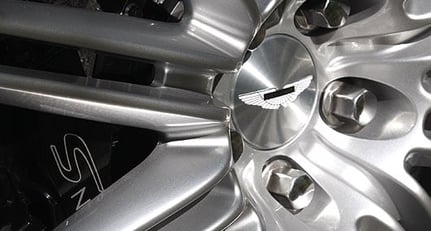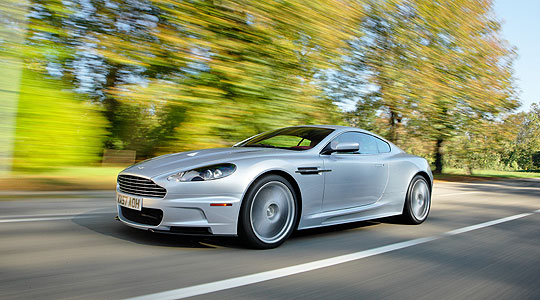
Classic Driver first published photographs of the new DBS in May 2006. Since then, the car has played centre-stage in the latest Bond film, and toured the world’s shows and events. Yet no journalist had driven a production car on the road - until earlier this week. Classic Driver was one of the very first publications to test the latest flagship model from Aston Martin, and try to ascertain its place in the supercar market, the differences over the existing DB9 range, and compare and contrast the latest car from Gaydon with the last from Newport Pagnell: the 200mph+ Vanquish.
So many questions, but fortunately a generous amount of time behind the wheel of the DBS on nearly-deserted roads in the Lot valley in south-western France provided answers to most, if not all of them.
It’s a handsome machine. Seeing it for the first time in an everyday environment (okay, it was a 5-star chateau but let’s be honest, that is going to be familiar territory for the £160,000 GT), it does look different from the DB9. It’s more muscular with its 20" wheels and widened front and rear track, all set under bodywork that includes a high proportion of carbonfibre, and with some scoops and aerodynamic addenda that signal the car’s sporting purpose.
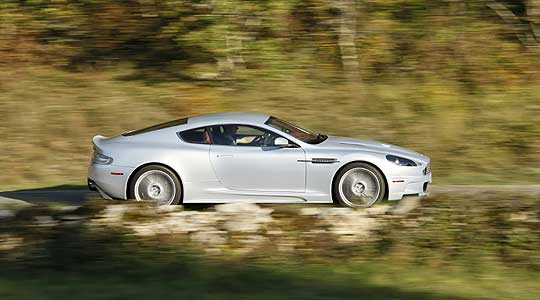
Let’s stop here a moment - sporting purpose? Is it a track-day special, a lightened DB9 incorporating many of the lessons learned at Le Mans? The initial photos gave that impression sure enough; all black Alcantara, carbonfibre and diamond-pattern stitching. The reality is that it’s quite a few steps removed from that, and no different from a similarly specified Ferrari 599. The roof, bonnet and boot are carbon, and it also has an exposed rear diffuser and front splitter in the same composite material. And while some sections of the cabin are in (matt-finish) natural black carbonfibre, the effect is more Monte Carlo than Mulsanne.
The lower ride, wide Pirelli P Zero tyres and enhanced side sills seem to suck the car to the ground - even before it’s in motion. It’s a modern, dynamic sporting look with the right degrees of light and shade in styling to give the DBS attributes that Dr Bez describes as "on one extreme very sporty, and on the other very sensitive and muscular".
The cabin will be reasonably familiar to DB9 and V8 owners, although the big difference is a totally new centre console with much clearer controls and instrumentation. The rev-counter and speedometer have been likewise simplified and improved for clarity of vision, and both of these improvements will inevitably filter down to the rest of the Aston Martin family next year. ‘Matrix Alloy’ finish is standard for the metal parts of the console, with ‘Piano Black’ an option on most of the test cars.
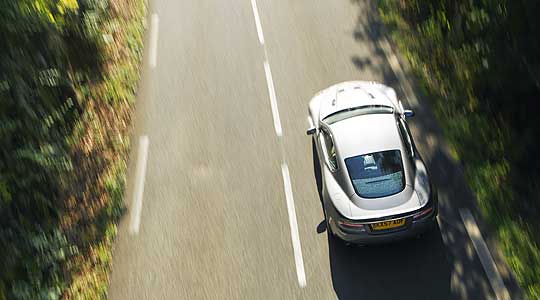
North American drivers will miss out on one of the new car’s strongest features - the lightweight one-piece carbonfibre/Kevlar buckets that are super-comfortable yet very supportive. I hold up my hand as a harsh critic of Aston Martin seats across the range in the past, but this time the company has done a superb job. Sadly, due to the Federal regulations requiring a separately adjustable backrest, they won’t be available in the US. Meanwhile, there are no rear seats, just a simple luggage shelf.
Starting is via the car’s ‘ECU’. That’s the ‘Emotional Control Unit’, by the way; a chunky metal and polished-sapphire lozenge more akin to a luxury sporting watch than a humble ‘key’. It does sound a little camp, but the way it works is that you slip it into the ‘lock’ mid-dash, press it in all of the way (with your foot completely depressing the clutch), and after a short systems check the 510bhp, 5935cc V12 bursts into life with a Vanquish-esque roar that soon dies to an imperceptible purr at tickover.
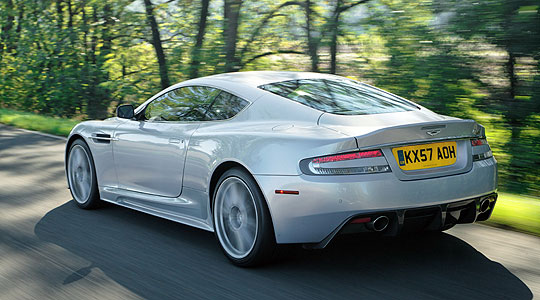
The engine is from the DB9 family, but has a higher compression ratio of 10.9:1 (as against 10.3:1 for the DB9) and produces a lot more power with its 510bhp @ 6,500rpm (versus 450bhp, although torque remains the same at 570Nm, albeit achieved at higher revs).
On the move, the DBS feels like a relatively big car but the lighter weight/improved power formula soon makes itself felt as the new Aston Martin responds to any input of braking, steering or acceleration with an alacrity far better than any other car in the manufacturer’s range.
The steering is well-weighted, and the car can be ‘thought’ through a corner with a good amount of power loading up the front wheels nicely, but retaining neutral handling with a high level of grip. A lot of this is down to the completely new, two-setting, Adaptive Damping System (ADS). Start the car and the default is ‘Normal’, which handled bumpy French D-roads better than many less performance-focused cars, the ‘softer’ (and you have to use the word loosely here) setting providing tremendous traction out of slow corners and over undulating roads.
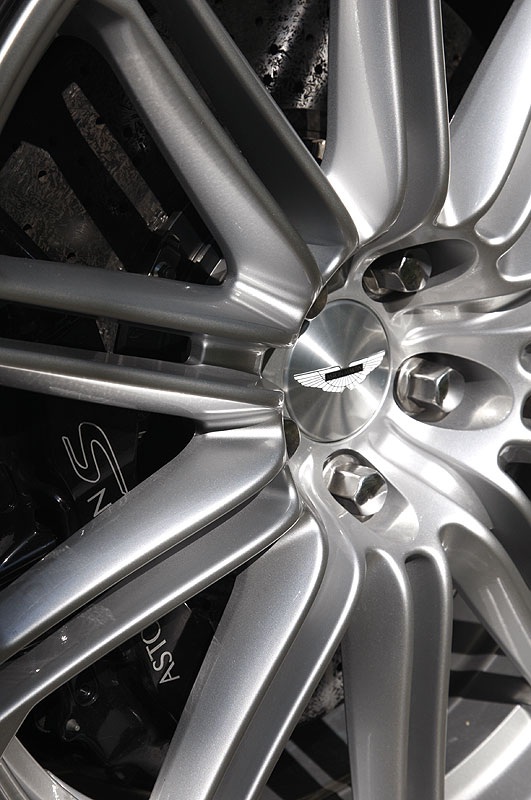
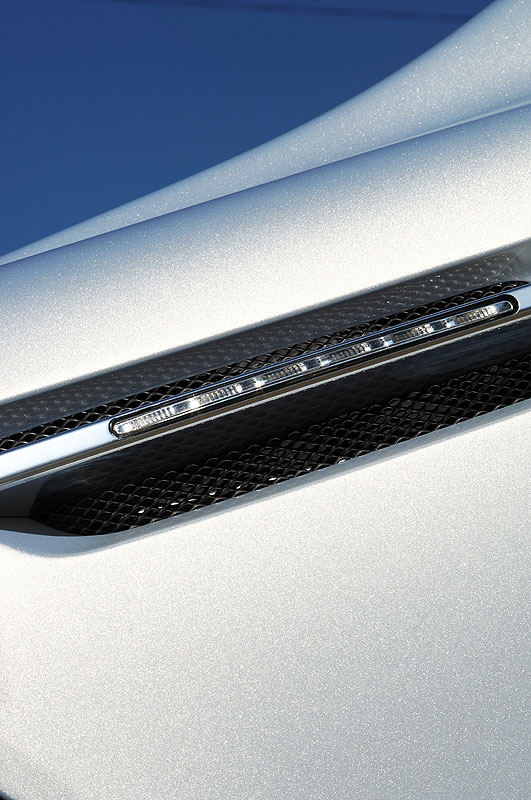
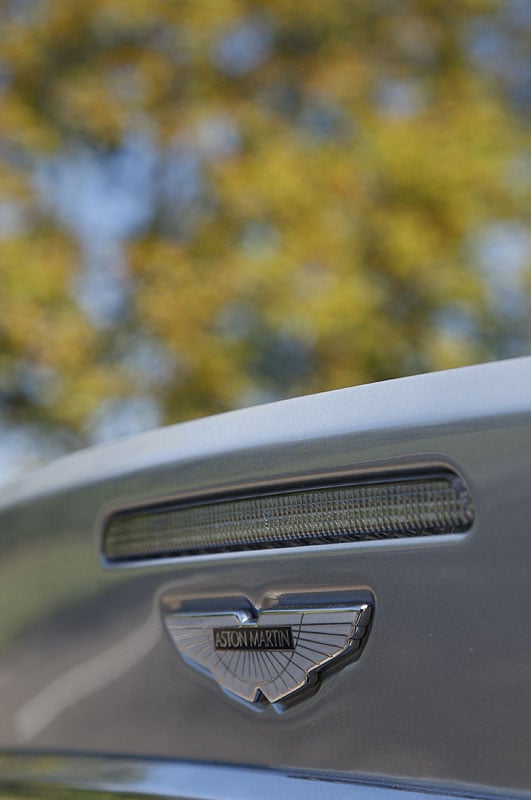
Within this setting (and also in ‘Track’) there are five levels of damping, each fine-tuned by an electronic control unit taking its readings from the car’s systems, such as throttle and brake positions, vehicle speed and steering wheel rotation. ‘Track’ gives you firmer damping instantly - it’s very clever and easily discerned through the seat - and is the optimum configuration for really fast road and track work. Yet you can still knock the speed right off through a French hamlet - forgetting to switch back to ‘Normal’ - and the ride does not cripple you. It’s very impressive.
As are the new CCM (Carbon Composite Material) brakes. These are another first for Aston Martin and will not be available on the DB9 or V8 Vantage due to the bespoke installation, requiring major airflow management changes to ensure enough cooling air is supplied to the 398mm front, 360mm rear, vented discs. The braking performance is phenomenal (60-0mph is 10% better than the DB9) and will last over a long run through Alpine passes. The best thing about the new Brembo CCM system is its feel - you can ‘caress’ the pedal and there’s no grinding or grating, it’s all very smooth and sophisticated and not at all ‘track day’.
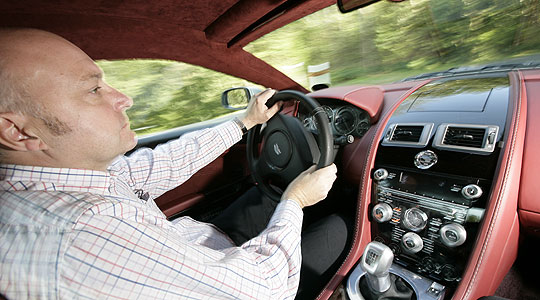
The engine feels a lot more free-spinning than in the DB9 and Vanquish, while the exhaust has an evocative timbre but is not contrived. At 3,500-4,000rpm the motor begins to open up with an encouraging note but is so flexible it will pull from 1,500rpm all the way to its cut-out at 7,000rpm or so. I was hitting the rev-limiter a few times, and that was due to a combination of youthful enthusiasm and, one of the car’s few flaws, a badly positioned gearlever that could really do with moving a hand’s breadth further forward. This is an issue with the other manual cars in the range but seemed to manifest itself more in the DBS, possibly due to its more ‘up and at ’em’ mien.
What, no sequential shift and paddles behind the wheel like Ferrari and Maserati? Aston Martin is coy about future developments; with production planned at just 500 units a year (leading to a two-year wait in some parts of the world), they don’t need to fill any perceived gap in the market. However, there was a ‘watch this space’ hanging in the air at the launch regarding transmission options for the future. We’ll see, but in my opinion installing the ‘Sportshift’ system used in the V8 Vantage would make this car nigh-on perfect.
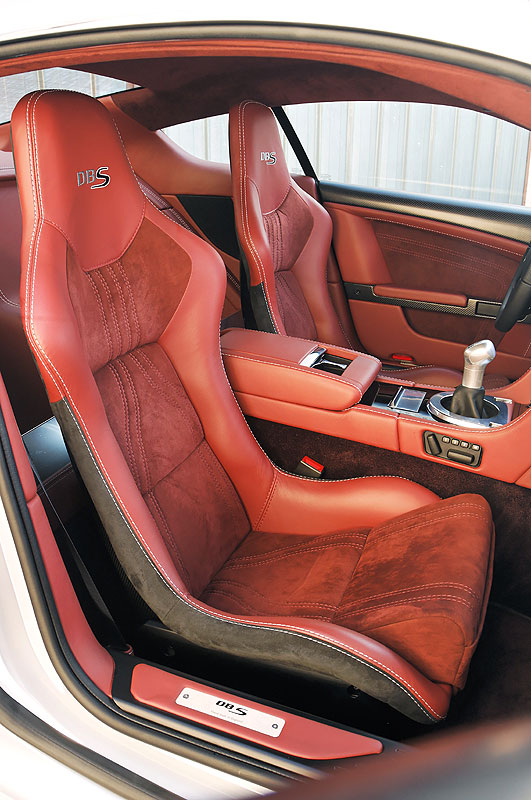
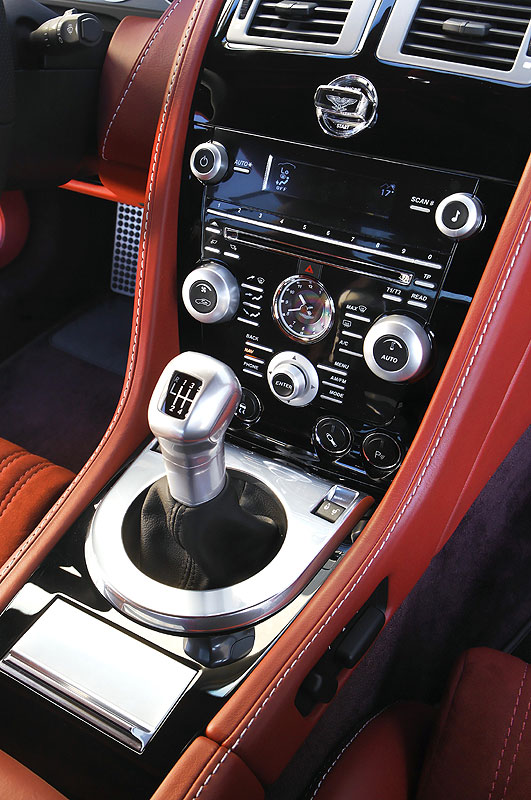
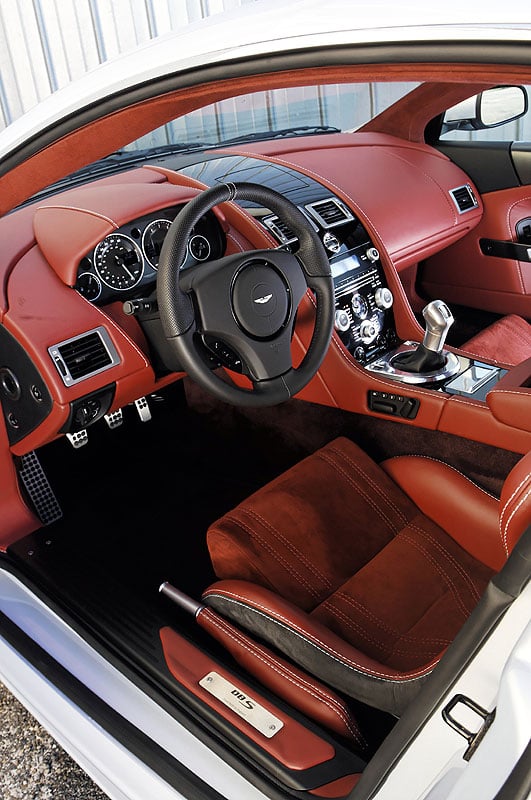
Nigh-on perfect? Price aside, it’s the best car from Gaydon by far and worth the extra £45k over a DB9 (although I’d like to drive a Sports Pack manual side-by-side) just for its driving dynamics and exclusivity. At £160,000 in the UK, comparisons will be drawn with the Ferrari 599 GTB in its most standard form (no CCM brakes, F1 gearbox or big wheels, and still more expensive), another V12 with a peerless badge and comfortable continental cruising capability.
That would be an unfair comparison because with an extra 100bhp the Italian car will pull (not ‘run’...) away from the DBS at really big speeds. Across country, at slightly more sensible velocities I think the two will be more evenly matched.
And the Vanquish, the first - and so far only - Aston Martin to crack 200mph? A fantastic machine, and something that encapsulates all the majesty and bespoke finishing of car production at Newport Pagnell. If you’ve just bought an Ultimate Edition Vanquish S you can sleep at night - it’s an alternative, appealing to different tastes.
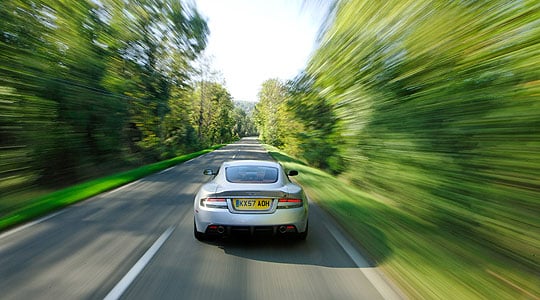
Dr Bez was bubbling with enthusiasm for the new car - despite suffering from what appeared to be early-onset pneumonia - and recognises his customer-base: those who want a car that does not shout ‘Here I am!’. He feels that the DBS "has a different character, but has the DNA of an Aston".
I wouldn’t disagree.
The Aston Martin DBS will be available in the UK at a price around £160,000, including such features as HDD satellite navigation, CCM brakes, memory seats (carbonfibre sports seats are a no-cost option) as standard. Any colour from the Aston Martin range can be specified although early production will be concentrated on the three special DBS metallic colours: Casino Ice (dark grey), Storm Black and Lightning Silver (light silver). Deliveries to customers will start in December 2007.
Please CLICK HERE to see a photo-gallery of the new DBS.
Text: Steve Wakefield
Photos: Aston Martin - Strictly Copyright
ClassicInside - The Classic Driver Newsletter
Free Subscription!
